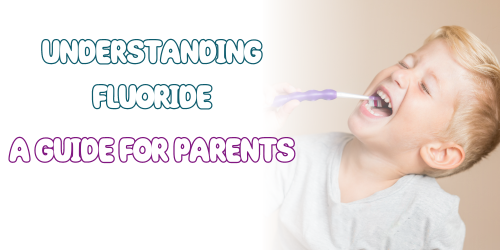As parents, we always want to do what's best for our children's health, and dental care is no exception. One key component in maintaining healthy teeth is fluoride. You may have heard of fluoride in toothpaste or tap water, but what exactly is it, and how much should your child be using? Let's break it down.
What Is Fluoride?
Fluoride is a naturally occurring mineral found in water, soil, and certain foods. Its primary role in dental health is to strengthen tooth enamel, the hard outer layer of teeth, which helps prevent cavities. Fluoride works by making teeth more resistant to acid attacks from plaque bacteria and sugars in the mouth. It can even reverse early signs of tooth decay.
Why Is Fluoride Important for Children?
Children are particularly vulnerable to tooth decay because their enamel is softer and more prone to damage as their teeth develop. Fluoride helps to harden the enamel, making it more resistant to decay. Regular exposure to fluoride during childhood can lay the foundation for a lifetime of strong, healthy teeth.
Sources of Fluoride
There are two main ways children can receive fluoride:
1. **Topical Fluoride:** This includes fluoride toothpaste, mouth rinses, and professional fluoride treatments applied by a dentist. These products help strengthen teeth that have already erupted.
2. **Systemic Fluoride:** This type is ingested and includes fluoridated drinking water and dietary supplements. Systemic fluoride is absorbed into the bloodstream and helps form tooth structure during the development of teeth beneath the gums.
How Much Fluoride Should Your Child Use?
The amount of fluoride your child needs depends on their age, the level of fluoride in your local water supply, and other fluoride sources they may be exposed to.
1. **Children Under 3 Years Old:**
- For babies and toddlers, it's crucial to use only a small amount of fluoride toothpaste. The NHS recommends using a smear of toothpaste no larger than a grain of rice. Children under 3 years old should use at least 1000ppm of fluoride
2. **Children Aged 3-6 Years:**
- At this age, increase the amount of toothpaste to a pea-sized dollop. Continue to supervise brushing to ensure they spit out the toothpaste after brushing. Children aged 3-6 more than 1000ppm of fluoride
3. **Children Over 6 Years Old:**
- By now, children should be able to brush their teeth independently, but it's still important to monitor their habits occasionally. They should use a pea-sized amount of fluoride toothpaste and spit out the excess. Children aged 6+ between 1350-1500ppm of fluoride.
Potential Risks of Excessive Fluoride
While fluoride is beneficial, too much can lead to a condition called dental fluorosis, which causes white spots or streaks on the teeth. This is generally only a concern during the years when teeth are still developing (before the age of 8). The risk of fluorosis can be minimized by following the recommended guidelines for toothpaste usage and by consulting your dentist about the right level of fluoride for your child.
Conclusion
Fluoride is a powerful tool in the fight against tooth decay, and when used correctly, it can help ensure your child develops strong, healthy teeth. By understanding how much fluoride your child needs at each stage of their development, you can help protect their smile for years to come. Always consult with your child's dentist if you're unsure about the best approach for your family, and remember—good dental habits start early!

